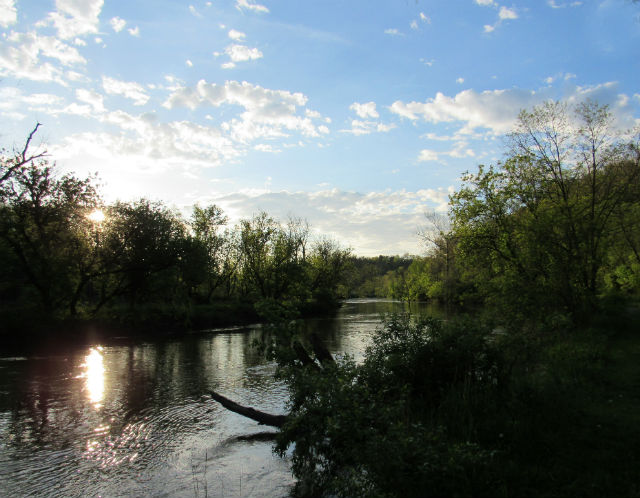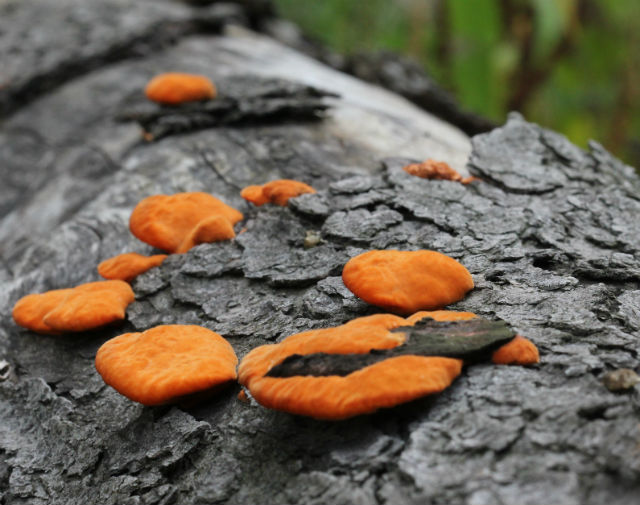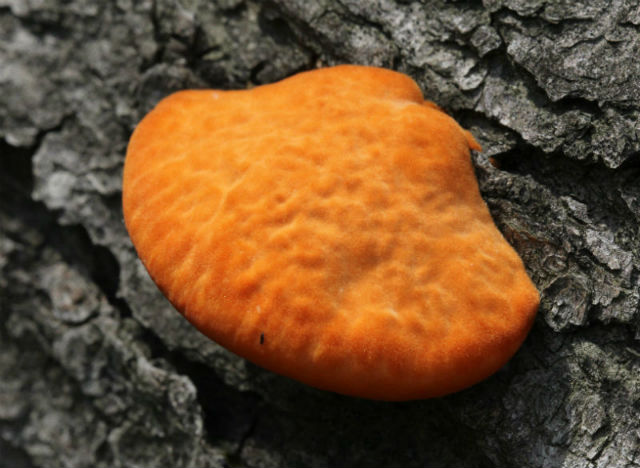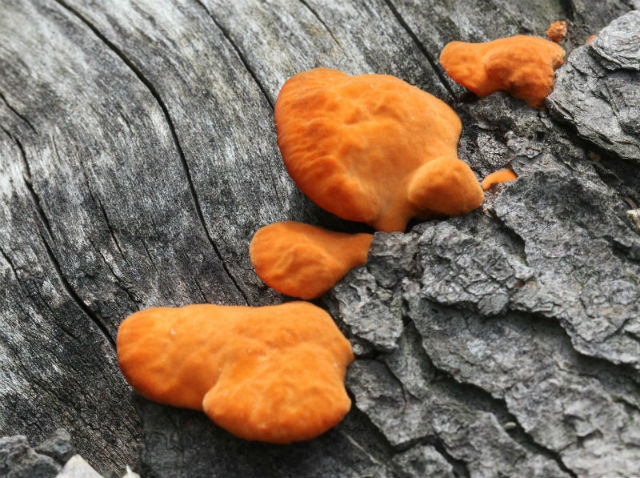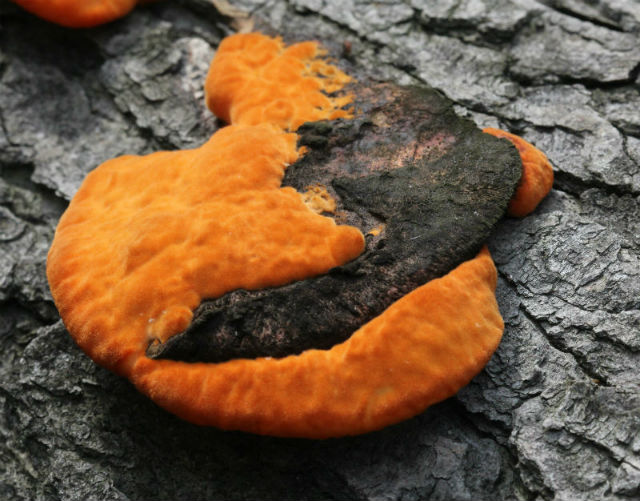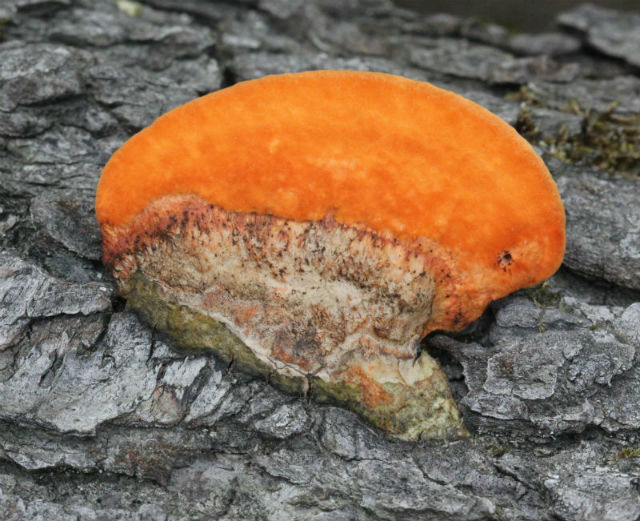While hiking in the Cuyahoga River Valley, I noticed the orange glow of Hapalopilus croceus (this fungus has no common name) displaying its brilliant color.
I have never encountered (or heard of) this organism before, so it was an unexpected find. This is a rather uncommon fungus found in Asia, Europe, Oceania, and North America. Hapalopilus croceus is nationally red-listed (threatened) in 11 European countries.
When fresh, this mushroom has a vibrant orange color, but it tends to fade or brown with age. This conspicuous wood-inhabiting fungus has habitat confined to wooded meadows and pastures.
The stalkless, broadly attached, fan-shaped fruiting body has a colorful cap and grows on decaying broadleaf wood, especially fallen Oaks.
Like its polypore relatives, Hapalopilus croceus contributes a crucial role in nature’s continuous rebirth, by breaking down dead wood and turning it into useful nutrients.
Fungi digest their food outside their bodies by releasing enzymes into the surrounding environment and converting organic matter into a form they can absorb; nothing else is able to perform the function of reducing dead wood back down into soil.

